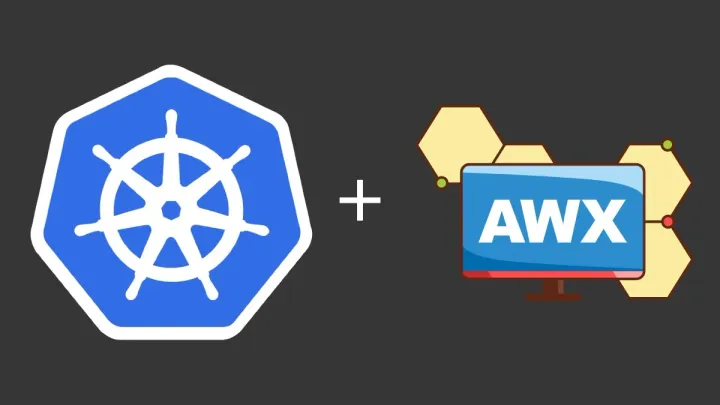Step-by-Step Guide: Setting Up a Polkadot Validator Node for Network Security and Staking Rewards with ansbile and systemd
Setting up a Substrate Polkadot validator node using Ansible and systemd is an efficient way to automate the deployment and management of your validator node.

Setting up a Substrate Polkadot validator node using Ansible and systemd is an efficient way to automate the deployment and management of your validator node. Ansible allows you to define the desired state of your infrastructure and execute tasks across multiple servers. In this tutorial, we'll guide you through the process of installing a Polkadot validator node using Ansible and systemd.
Prerequisites:
Before you begin, ensure you have the following prerequisites:
- A local machine or control node with Ansible installed.
- Remote servers or VPS instances where you want to deploy the validator node.
- SSH access to the remote servers with passwordless sudo privileges.
- A basic understanding of Ansible.
Step 1: Set Up Ansible on Your Local Machine
- Install Ansible on your local machine if you haven't already
- Create an Ansible inventory file (
hosts.ini) that lists the IP addresses or hostnames of your remote servers
[validators]
validator1 ansible_host=validator1_ip_address
validator2 ansible_host=validator2_ip_address
# Add more servers as needed
Step 2: Create an Ansible Playbook
An Ansible playbook is a YAML file that defines the tasks you want to automate. Create a playbook file (e.g., deploy_validator.yml) with the following content:
---
- hosts: validators
become: yes
tasks:
- name: Update system packages
apt:
update_cache: yes
tags:
- common
- name: Install required packages
apt:
name: "{{ item }}"
state: present
loop:
- git
- curl
- build-essential
- cmake
- clang
- libssl-dev
tags:
- common
- name: Install Rust
shell: >
curl --proto '=https' --tlsv1.2 -sSf https://sh.rustup.rs | sh -s -- -y
args:
executable: /bin/bash
environment:
RUSTUP_HOME: /opt/rustup
CARGO_HOME: /opt/cargo
tags:
- rust
- name: Add Rust to PATH
lineinfile:
path: "{{ item }}"
line: 'export PATH=$PATH:/opt/cargo/bin:/opt/rustup/bin'
insertafter: EOF
loop:
- /etc/profile
- /home/{{ ansible_user }}/.bashrc
tags:
- rust
- name: Clone Polkadot repository
git:
repo: https://github.com/paritytech/polkadot.git
dest: /opt/polkadot
version: master
force: yes
tags:
- polkadot
- name: Build the Validator Node
command: >
/opt/cargo/bin/cargo build --release --features=validator
args:
chdir: /opt/polkadot
tags:
- polkadot
- name: Create Validator Configuration
template:
src: validator-config.json.j2
dest: /opt/polkadot/validator-config.json
tags:
- polkadot
- name: Create systemd service unit file
template:
src: polkadot-validator.service.j2
dest: /etc/systemd/system/polkadot-validator.service
notify: Reload systemd
tags:
- systemd
- name: Start and enable Polkadot validator service
systemd:
name: polkadot-validator
state: started
enabled: yes
tags:
- systemd
Step 3: Create Template Files
Create two template files, one for the Polkadot validator configuration (validator-config.json.j2) and one for the systemd service unit (polkadot-validator.service.j2). Here's an example template for validator-config.json.j2:
{
"chain": "polkadot",
"validator": true,
"key": "your_validator_key",
"validator-name": "YourValidatorName",
"validator-payment-dest": "your_payment_address",
"validator-stash": "your_stash_address",
"rpc-cors": "all",
"rpc-external": true,
"rpc-port": 9933,
"ws-external": true,
"ws-port": 9944,
"ws-allow-origin": "all",
"rpc-methods": "Unsafe",
"rpc-threads": 4,
"rpc-server": true,
"name": "YourValidatorName",
"execution": "Native",
"db": "RocksDb"
}
And here's an example template for polkadot-validator.service.j2:
[Unit]
Description=Polkadot Validator Node
[Service]
ExecStart=/opt/polkadot/target/release/polkadot \
--chain polkadot \
--validator \
--key your_validator_key \
--validator-name "YourValidatorName" \
--validator-payment-dest your_payment_address \
--validator-stash your_stash_address \
--rpc-cors all \
--rpc-external \
--rpc-port 9933 \
--ws-external \
--ws-port 9944 \
--ws-allow-origin all \
--rpc-methods Unsafe \
--rpc-threads 4 \
--rpc-server \
--name YourValidatorName \
--execution Native \
--db RocksDb
Restart=always
User={{ ansible_user }}
Group={{ ansible_user }}
[Install]
WantedBy=multi-user.target
Step 4: Run the Ansible Playbook
Run the Ansible playbook on your local machine to deploy the Polkadot validator nodes on your remote servers:
ansible-playbook -i hosts.ini deploy_validator.ymlAnsible will execute the defined tasks on each server listed in the inventory file, automating the installation and configuration process.
Step 5: Monitor Your Validator Node (Optional)
You can use monitoring tools like Prometheus and Grafana to keep track of your validator's performance and status.
Step 6: Bond Tokens (Optional)
To become an active validator, you need to bond a certain amount of DOT tokens. This is done through the Polkadot governance interface or by transferring tokens to your validator's account.
Step 7: Register Your Validator (Optional)
To officially become a validator on the Polkadot network, you'll need to register your validator using the governance process.
Congratulations! You've successfully automated the deployment of a Substrate Polkadot validator node using Ansible and systems.
This setup ensures that your validator nodes run continuously and automatically recover from failures or server reboots.


